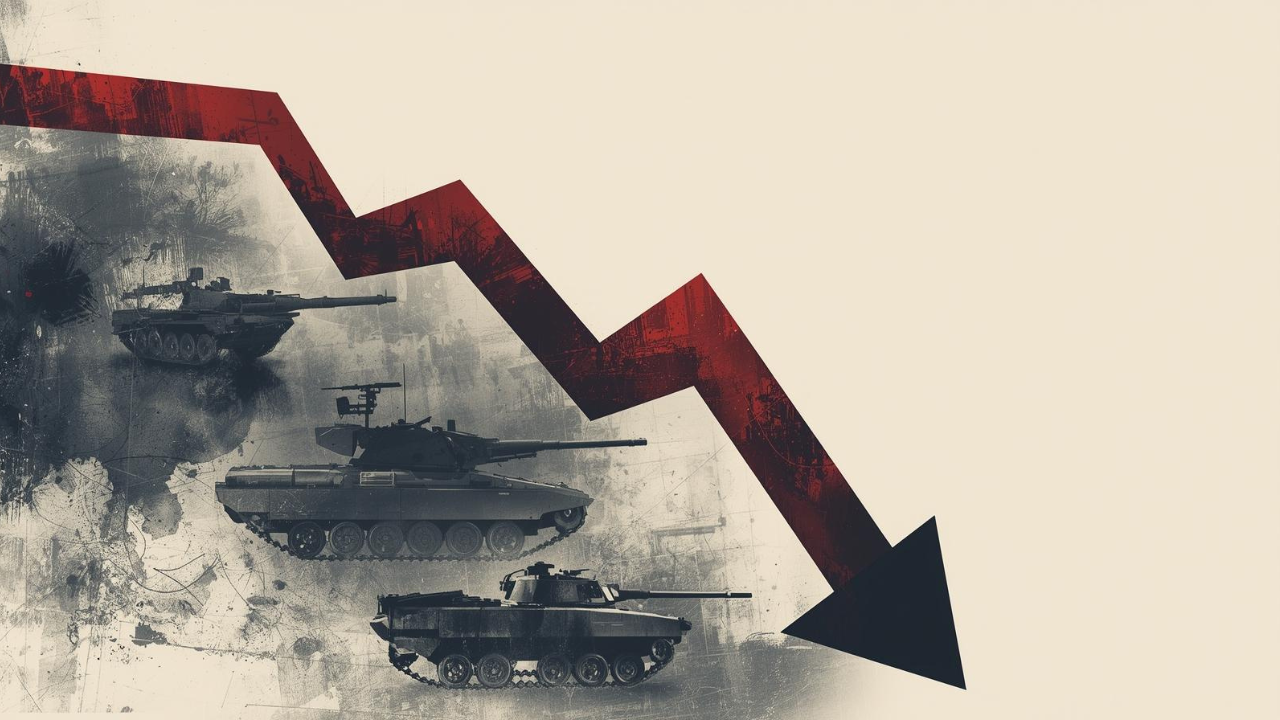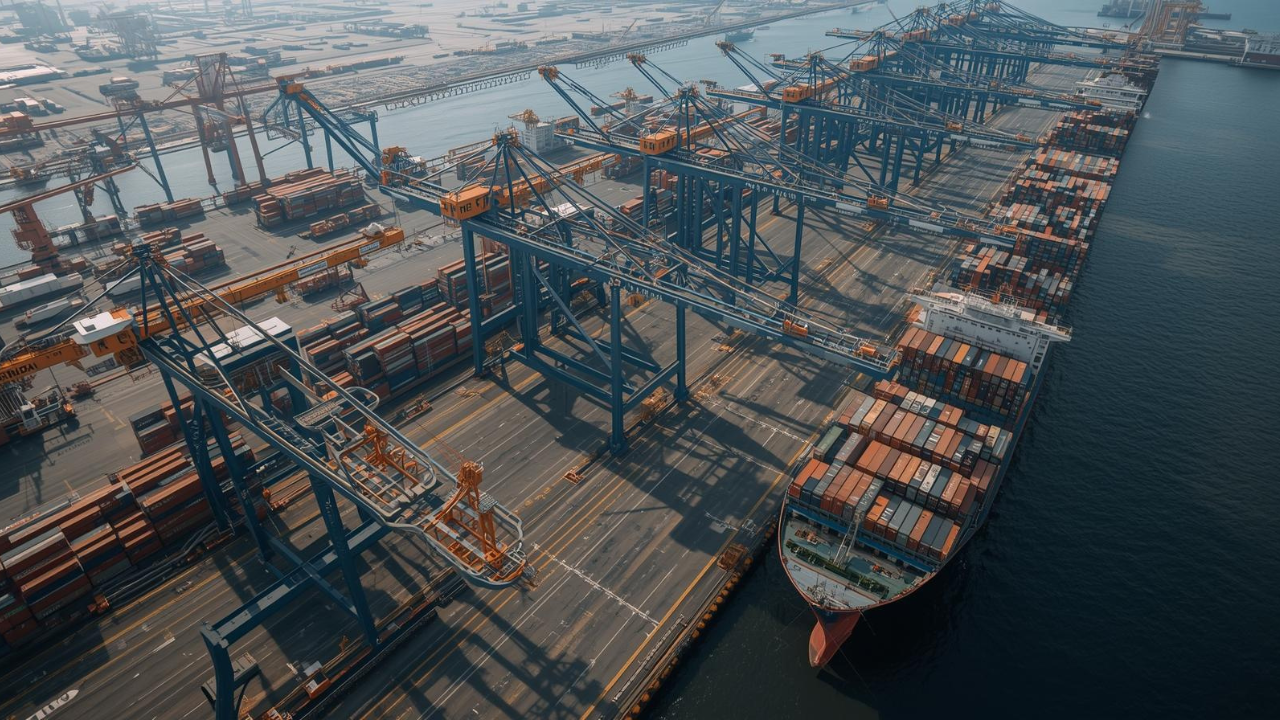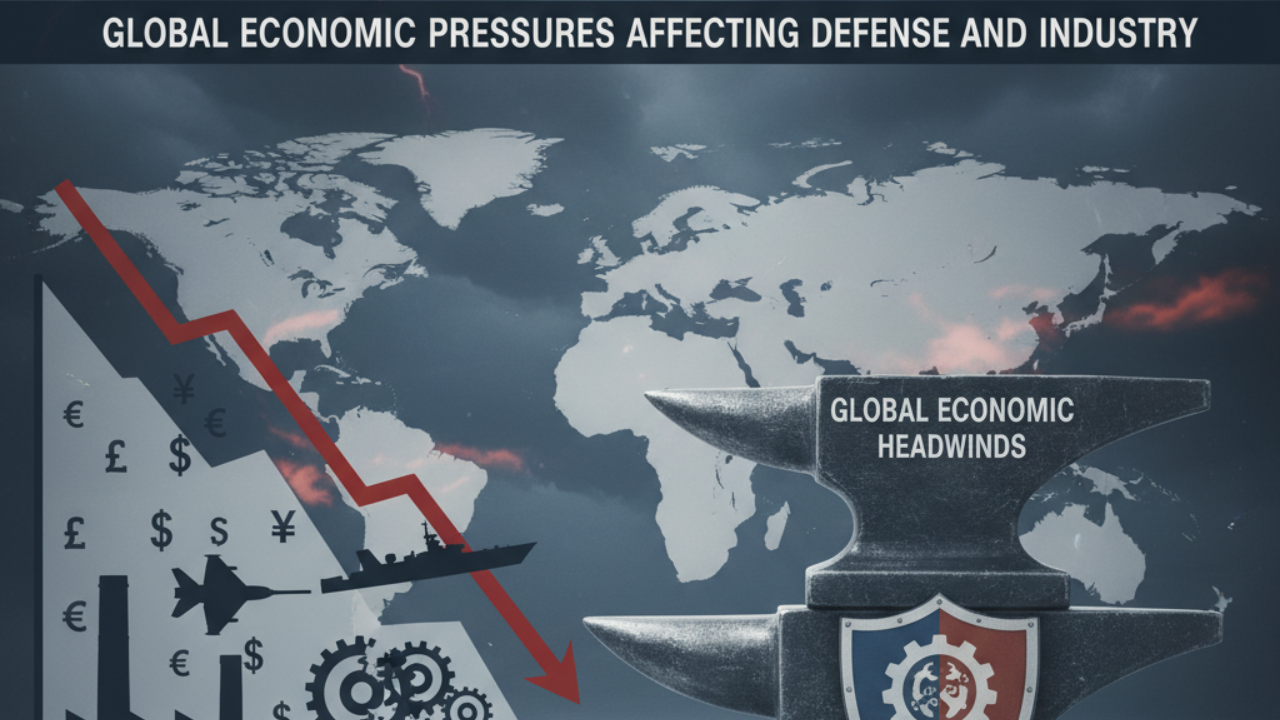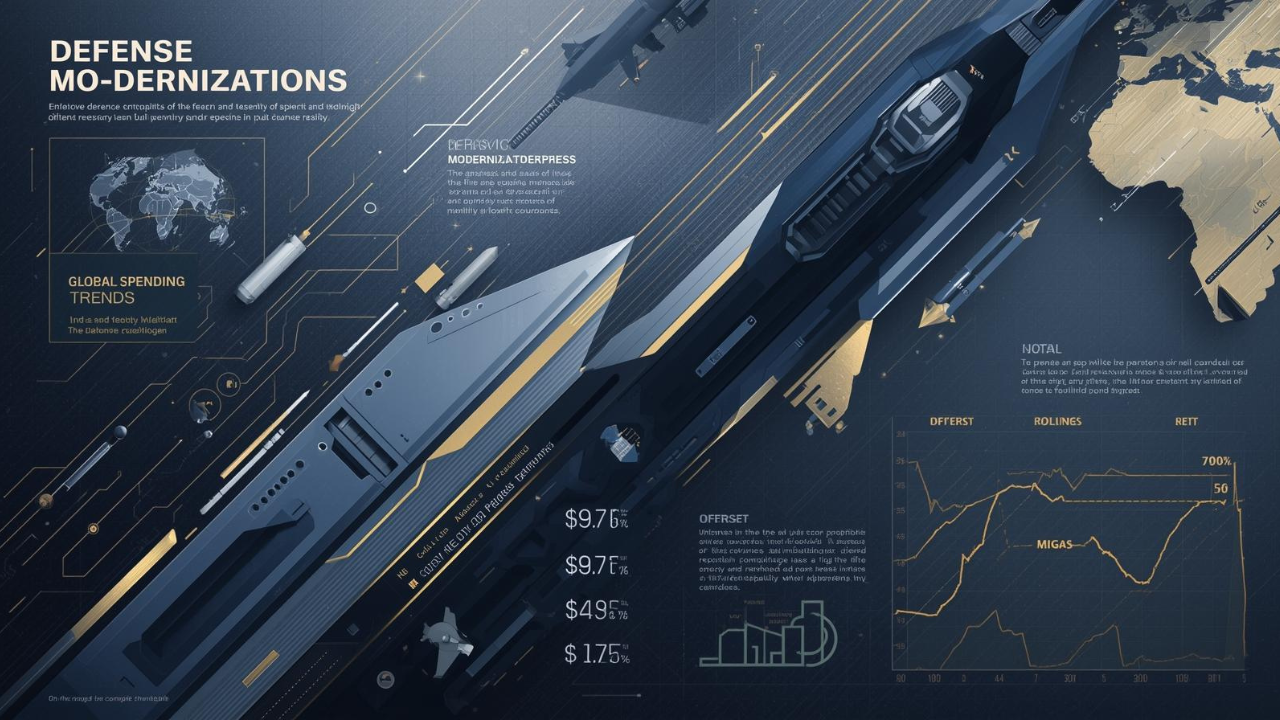
Post by : Meena Rani
As of November 2025, global economic challenges—persistent inflation, recession risks, and rising public debt—are exerting unprecedented pressure on defense budgets. According to the Stockholm International Peace Research Institute (SIPRI), global military expenditure reached $2,718 billion in 2024, a 9.4% year-on-year increase—the steepest since the Cold War. Yet, in real terms, inflation has eroded 5–8% of purchasing power across major spenders, while recession fears in Europe and debt ceilings in the U.S. threaten future growth.
This 9,000-word analysis—grounded in SIPRI, IISS, IMF, World Bank, CSIS, and national budget data—examines how economic headwinds are:
Defense is not being cut—it is being recalibrated under fiscal duress. The U.S. FY2025 request of $997 billion, China's official $245 billion (estimated $700B+), and India's $75 billion all reflect resilience—but at a cost.
Defense spending has always been cyclical. Post-WWII demobilization cut U.S. spending from 37% of GDP to 3% by 1948. The Cold War saw peaks at 10% GDP in the 1960s. The peace dividend post-1991 reduced global spending by 34% in real terms by 1998.
1970s Oil Crisis (1973–79) led to a 6% real decline in global spending and delayed F-16 deployment. The 2008 Financial Crisis (2009–13) saw an 8% NATO average decline, triggering U.S. sequestration. COVID-19 (2020–21) reduced spending by 3.7%, with stimulus offsetting cuts. The 2022–25 inflation surge increased nominal spending by 9.4% but reduced real value by 5%, driving efficiency reforms.
Unlike past crises, 2025 combines high inflation (5–7% in OECD), debt-to-GDP above 100% in 60+ countries, and geopolitical escalation (Ukraine, Taiwan, Middle East).
Inflation is the silent killer of defense budgets. A 6% inflation rate reduces a fixed budget's real value by 17% over three years. The U.S. Department of Defense estimates $38 billion annual cost growth due to inflation in procurement alone.
Weapons Procurement: $170B nominal cost, inflation impact 7.2%, real loss $12.2B. Personnel (Pay): $182B nominal, inflation impact 5.5%, real loss $10.0B. Operations & Maintenance: $300B nominal, inflation impact 6.8%, real loss $20.4B.
Unit cost rose from $80M in 2010 to $110M in 2025, a 37% increase, of which 22% is inflation-driven. Delays now threaten Lot 18 delivery.
Japan’s $59B budget buys 15% fewer missiles. Germany’s €52B “Sondervermögen” is worth €48B in 2022 euros.
The UK Ministry of Defence now uses CPI-linked pricing for 68% of major contracts.
The IMF forecasts 2.8% global growth in 2025, below the 3.0% recession threshold. Europe faces stagnation (0.4% Germany, –0.1% UK).
U.S. sequestration cut $487B over 10 years. The UK reduced its army from 102,000 to 82,000, resulting in hollow forces and delayed modernization.
Poland increases defense to 4.7% of GDP—the highest in NATO. South Korea maintains 2.7% despite slowdown.
Recession plus security threat forces modernization at the expense of readiness.
Global public debt stands at $97 trillion, 93% of GDP. Interest payments now exceed defense spending in 47 countries.
U.S. debt is $36T. Interest is $1.1T in 2025, exceeding defense at $997B. Each 1% rate hike adds $340B in interest over a decade.
Pakistan spends 78% of revenue on debt service, Egypt 92%. Defense is sustained via Chinese loans.
Ukraine aid packages require defense spending capped at 2.5% of GDP.
Japan issues ¥2T defense bonds at 0.5% yield.
SIPRI 2025 projects $2,800B global spending. The top 10 countries account for 76% of total. Asia-Oceania shows the fastest growth at 6.1%.
USA: $997B, 3.5% of GDP, real growth –2.1%. China: $245B official, 1.7% of GDP, real growth +4.8%. Russia: $140B, 7.1% of GDP, real growth –12%. India: $75B, 2.4% of GDP, real growth +3.2%. Saudi Arabia: $78B, 7.6% of GDP, real growth –5%.
Only 18 of 32 NATO members meet the 2% GDP target. Germany is at 1.57% despite a €100B fund.
Japan allocates ¥8.9T ($59B), Taiwan 2.5% of GDP, and South Korea invests in KDX-IV destroyers.
Saudi Arabia spends $78B but Vision 2030 cuts non-oil spending.
The FY2025 request totals $997B (discretionary), with 52% for operations and maintenance, 17% for procurement, and 18% for personnel.
Defense spending may fall to 2.4% of GDP by 2035 unless revenues rise.
PLA modernization includes 055 destroyers, J-20s, and hypersonic weapons. GDP growth is 4.6%, but debt is 300% of GDP.
War economy allocates 40% of the budget to defense. Ruble collapse risk is present.
India’s 2025–26 defense budget is ₹6.21 lakh crore ($75B), with a capital outlay of ₹1.72 lakh crore.
#DefenseBudget #EconomicCrisis #DefenseSpending2025 #InflationImpact #SIPRI #NATO2Percent #IndiaDefense #ChinaPLA #GlobalSecurity #MilitaryEconomics










Advances in Aerospace Technology and Commercial Aviation Recovery
Insights into breakthrough aerospace technologies and commercial aviation’s recovery amid 2025 chall

Defense Modernization and Strategic Spending Trends
Explore key trends in global defense modernization and strategic military spending shaping 2025 secu

Tens of Thousands Protest in Serbia on Anniversary of Deadly Roof Collapse
Tens of thousands in Novi Sad mark a year since a deadly station roof collapse that killed 16, prote

Canada PM Carney Apologizes to Trump Over Controversial Reagan Anti-Tariff Ad
Canadian PM Mark Carney apologized to President Trump over an Ontario anti-tariff ad quoting Reagan,

The ad that stirred a hornets nest, and made Canadian PM Carney say sorry to Trump
Canadian PM Mark Carney apologizes to US President Trump after a tariff-related ad causes diplomatic

Bengaluru-Mumbai Superfast Train Approved After 30-Year Wait
Railways approves new superfast train connecting Bengaluru and Mumbai, ending a 30-year demand, easi